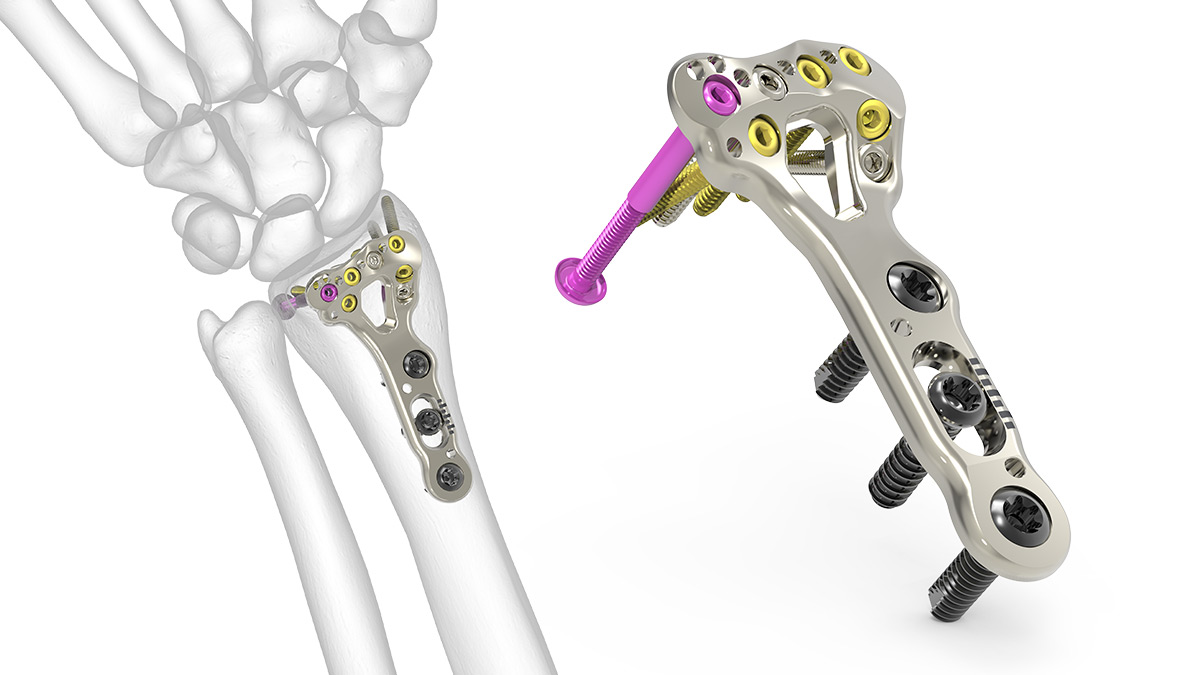
Register to receive a free Small Bone and Joint Orthopedic Devices Market Report Suite for US synopsis and brochure
Acumed, a major player in the orthopedic market, has recently acquired the Reduction and Association of the Scaphoid and Lunate (RASL) repair system from Radicle Orthopedics with the hope that this strategic move will strengthen Acumed’s position to deliver innovative and powerful solutions to address fractures and associated soft tissue injuries of the hand and wrist.
This system specifically targets the scapholunate ligament of the wrist. According to Acumed, the wrist is an area identified as needing a surgical innovative solution in order to ensure and deliver optimal results for patients. The RASL system was engineered by Melvin Rosenwasser, MD, and has been granted FDA approval in the US for the implant and the specialized instrumentation.
Acumed’s already exisiting hand and wrist product line, including the Acutrak 2® Headless Compression Screw, is expected to be streamlined from the addition of RASL Repair System “This acquisition will further strengthen Acumed’s position to deliver compelling and comprehensive solutions to address fractures and associated soft tissue injuries of the hand and wrist,” said Acumed President and CEO Sharon Wolfington. “Acumed will continue to build its portfolio to meet the unmet needs of the fellowship-trained Hand and Upper Extremity, Sports Medicine, Foot and Ankle, and Trauma surgeons. We will do this both with organic innovation and with acceleration acquisitions,” stated Jagi Gill, VP/GM of AcuVentures, a subsidiary of Acumed.
According to iData Research, some of the devices are referred to as the Fusion Plating system (e.g. Acumed’s Total Wrist Fusion Plating System designed for wrist arthrodesis due to deformities), while there is also the Hand Fracture System (e.g. Acumed® Hand Fracture system indicated for various metacarpal and phalangeal fractures, fusions and osteotomies). Both examples are plate and screw devices that might be used for fracture fixation and/or deformities, depending on a patient’s pathoanatomy.
iData reports that the most rapidly growing segments continue to be represented by wrist fusion and ulnar head replacement. Wrist fusion market growth is due to fracture and arthritis of the hand, while ulnar head replacement growth is driven by increasing penetration. Most distal radioulnar joint surgeries involve a shortening of the ulna, known as a Darrach’s procedure, or radioulnar fusion, known as a Sauvé-Kapandji procedure. Aptis Medical’s dominance of the market revolves around their device’s patent and its associated Scheker method.
“Scapholunate dissociation is one of the most common types of instability of the wrist. Injury to the associated ligament prevents normal motion and contributes to significant pain. One of the features of the the RASL Repair System is to provide precise targeting with the intent to afford a straightforward and reproducible solution to this clinical problem. We are excited to see Acumed deliver to the surgical community this new solution to address a vexing condition,” stated Dr. Rosenwasser.
For Further Information
More on the small bone and joint orthopedic devices market in the U.S. can be found in a series of reports published by iData entitled the U.S. Market Report Suite for Small Bone and Joint Orthopedic Devices.